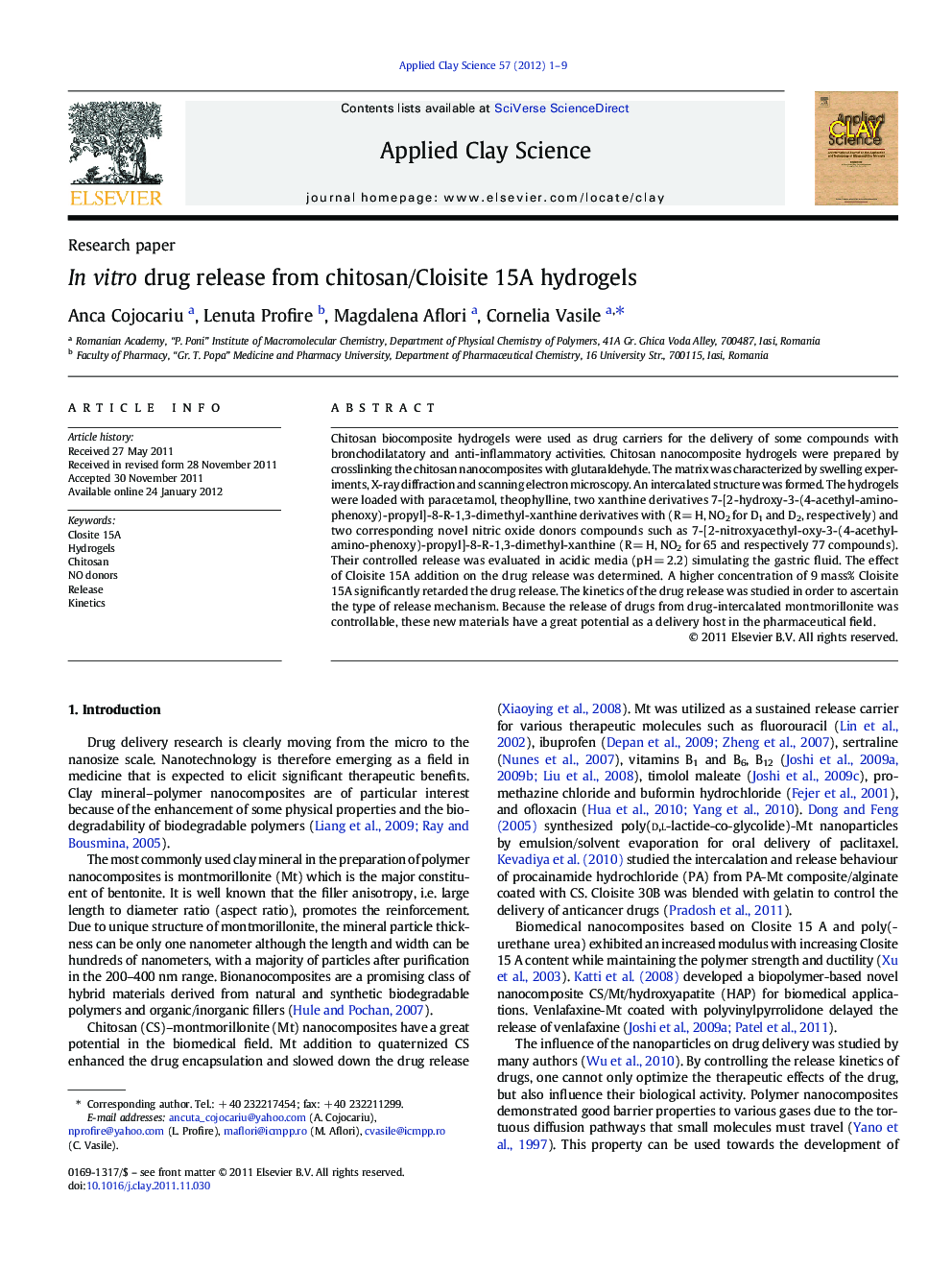| Article ID | Journal | Published Year | Pages | File Type |
|---|---|---|---|---|
| 1695317 | Applied Clay Science | 2012 | 9 Pages |
Chitosan biocomposite hydrogels were used as drug carriers for the delivery of some compounds with bronchodilatatory and anti-inflammatory activities. Chitosan nanocomposite hydrogels were prepared by crosslinking the chitosan nanocomposites with glutaraldehyde. The matrix was characterized by swelling experiments, X-ray diffraction and scanning electron microscopy. An intercalated structure was formed. The hydrogels were loaded with paracetamol, theophylline, two xanthine derivatives 7-[2-hydroxy-3-(4-acethyl-amino-phenoxy)-propyl]-8-R-1,3-dimethyl-xanthine derivatives with (R = H, NO2 for D1 and D2, respectively) and two corresponding novel nitric oxide donors compounds such as 7-[2-nitroxyacethyl-oxy-3-(4-acethyl-amino-phenoxy)-propyl]-8-R-1,3-dimethyl-xanthine (R = H, NO2 for 65 and respectively 77 compounds). Their controlled release was evaluated in acidic media (pH = 2.2) simulating the gastric fluid. The effect of Cloisite 15A addition on the drug release was determined. A higher concentration of 9 mass% Cloisite 15A significantly retarded the drug release. The kinetics of the drug release was studied in order to ascertain the type of release mechanism. Because the release of drugs from drug-intercalated montmorillonite was controllable, these new materials have a great potential as a delivery host in the pharmaceutical field.
► Chitosan composites hydrogels capability as NO donor drug carriers was investigated. ► The swelling, kinetics and release mechanism changes with clay content were established. ► The Cloisite 5A content which retarded the drug release was determined.
